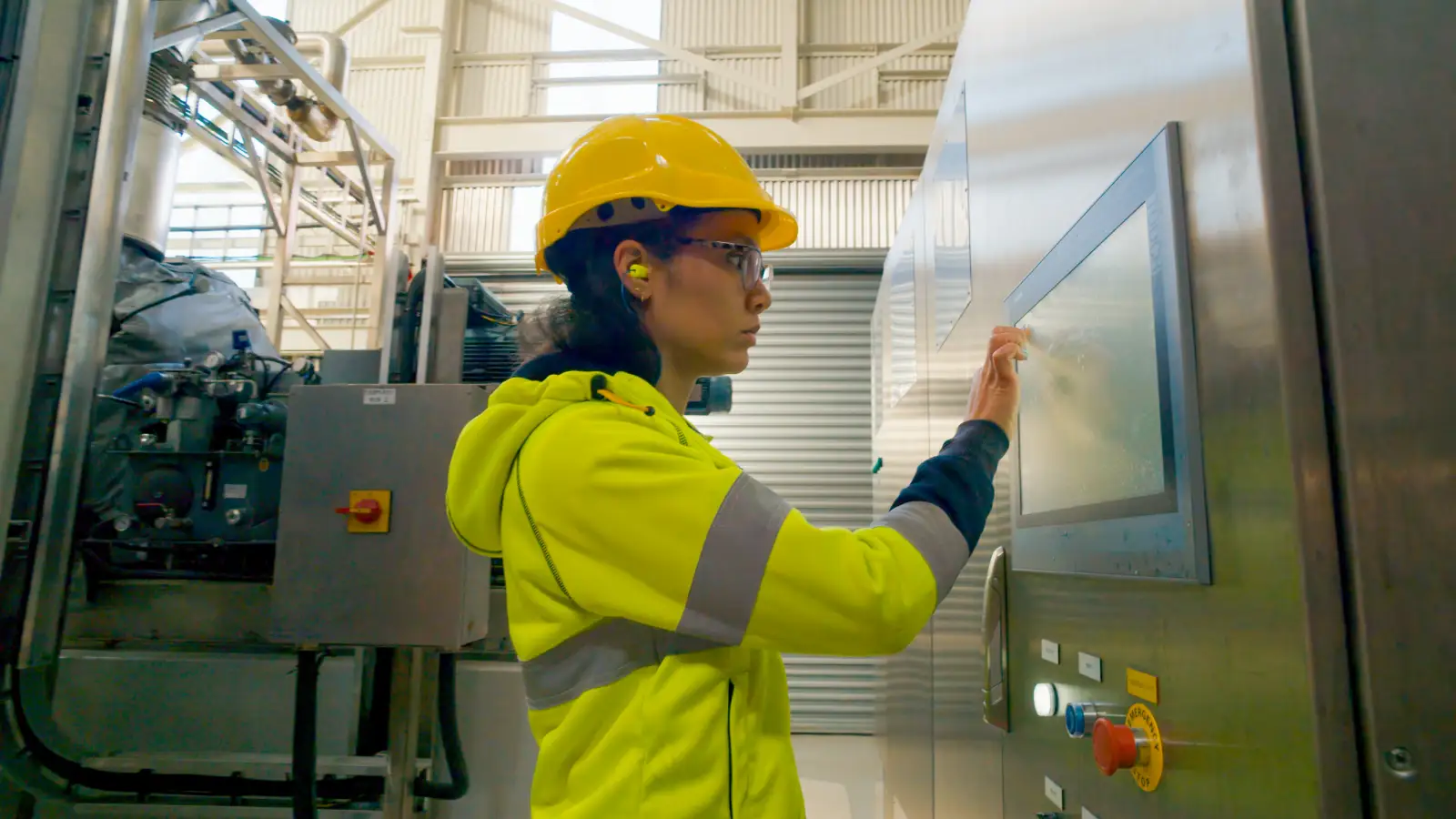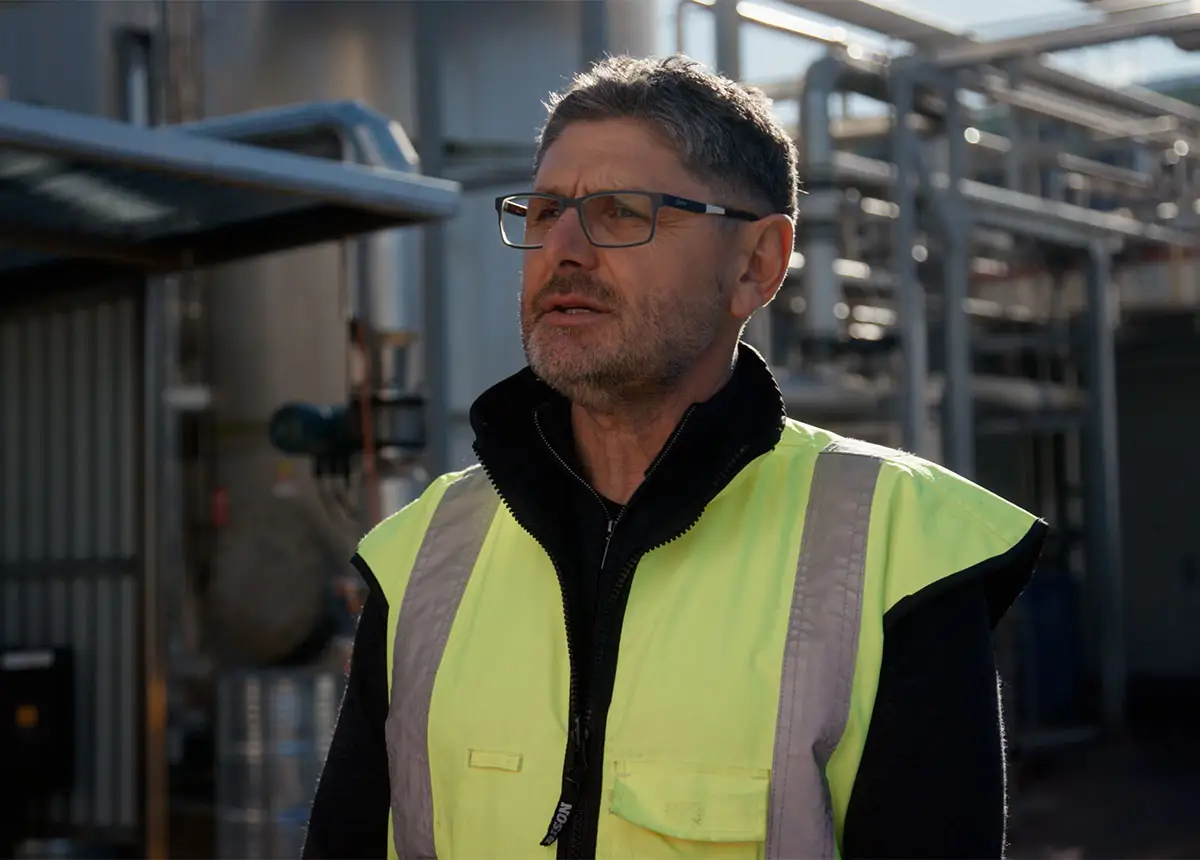Across New Zealand, food manufacturers are exploring new ways to reduce energy use and cut costs while staying competitive. New Zealand Sugar (Chelsea Sugar) and Goodman Fielder’s Longburn Dairy Plant took on this challenge by turning wasted heat into a valuable energy source.
Their journeys show how different heat recovery technologies can deliver significant financial and environmental benefits.
Energy challenges in food production
Both New Zealand Sugar and Goodman Fielder’s dairy plant operate at industrial scale, producing staple foods for New Zealand households. Both companies face similar challenges: rising energy costs, ambitious sustainability targets, and aging infrastructure.
The numbers:
- New Zealand Sugar processes approximately 200,000 tonnes of sugar products per year.
- Goodman Fielder processes approximately 100 million litres of milk annually.
Through undertaking energy audits both businesses identified waste heat as an untapped resource that could be recovered, reducing reliance on natural gas and cutting carbon emissions.

New Zealand Sugar finds opportunity in waste heat
Sugar refining is energy-intensive, particularly during the evaporation stage, which traditionally relied on gas-fired steam. New Zealand Sugar’s ambitious goal to reduce emissions by 42% by 2032 prompted the team to look for innovative solutions.
The refinery replaced its old steam-driven thermal vapor recompression (TVR) evaporator with an electric Mechanical Vapour Recompression (MVR) system.
The MVR captures vapour produced during evaporation, compresses it, and reuses it as a heat source. By recycling this energy more efficiently, the refinery significantly reduced its reliance on gas. New Zealand Sugar’s refinery process manager Lee-Andra Abrahams says the MVR has been a crucial project for the organisation.
“It has enabled us to reduce our gas consumption by about 10% while improving throughput and downstream efficiencies.”
The project required advanced automation, staff training, and careful planning to ensure a smooth transition.
New Zealand Sugar General Manager Matt Donn says the success of the MVR gave the organisation the confidence to step into new technologies.
“It’s enabled us to push what we are capable of,” says Donn.
Chelsea Sugar MVR project impact summary
- Technology — Mechanical Vapor Recompression (MVR) evaporator.
- Efficiency gain — 7x more energy efficient than the previous thermal vapour recompression (TVR) system.
- Operational benefit — Increased syrup concentration (79° Brix), reducing downstream boiling times and debottlenecking production.
- Gas reduction — 10% reduction relative to 2022 baseline.
- GHG emissions savings — Approximately 2,000 tonnes of CO₂e annually.
- Return on investment — Comparable industry installations cost NZD $3–5 million with around a 4- to 5-year payback.
How Mechanical Vapor Recompression works
- Stage 1 — Capture low-pressure steam vapor generated during sugar syrup evaporation.
- Stage 2 — Compress vapor to increase pressure and temperature.
- Stage 3 — Reuse recompressed vapor as a heat source in a closed-loop system.
- Result — Reduces gas-fired steam input and achieves up to seven times higher efficiency than the old system.

Goodman Fielder harnesses refrigeration waste heat with heat pumps
Cleaning and pasteurisation of milk required huge volumes of hot water, traditionally produced by gas boilers. This was costly, carbon-intensive, and under scrutiny as the company pursued efficiency and sustainability.
The solution: industrial heat pumps capture heat from the ammonia refrigeration system — previously lost to the atmosphere — to produce all secondary hot water needed for cleaning and support services.
Goodman Fielder site manager Johnny Duff says the team has seen a 35% reduction in gas usage site wide and achieved a three-and-a-half-year payback period.
“It was a no-brainer for us,” says Duff.
Accurate data and strong collaboration ensured proper system sizing and seamless integration.
Goodman Fielder capital project manager Mike Christensen says any business with process heat demand needs to be focusing on this kind of technology.
“Don’t delay — be bold,” he says.
The success of the project relied on accurate data to size the system correctly, and on strong collaboration between engineers and site teams to ensure seamless integration into daily operations.
Goodman Fielder heat recovery project impact summary
- Technology — Two 450 kW packaged heat pumps capturing refrigeration waste heat.
- Efficiency gain — COP up to 4, displacing gas-fired water heating.
- Gas reduction — 35% in secondary hot water production.
- GHG emissions savings — Approximately 1,200 tonnes of CO₂e annually.
- Return on investment — Approximately $1.2 to $1.5 million with a 3.5-year payback.
How the heat pumps work
Goodman Fielder’s dairy plant used piped fossil fuel gas to produce both primary (103°C) and secondary (55°C) hot water for pasteurisation and cleaning. The secondary hot water was produced inefficiently by the same boiler used for pasteurisation.
- Heat source — Waste heat from the ammonia refrigeration system, previously emitted to the atmosphere via cooling towers.
- Heat pump integration — A packaged 450 kW heat pump raises incoming water temperature from around 20°C to 55°C for cleaning in place (CIP) and other processes.
- Impact — 100% of secondary hot water needs are now met by recovered heat, freeing the main boiler to focus on primary pasteurisation tasks.
Heat recovery and energy efficiency: lessons learned
Both businesses leveraged heat recovery technologies tailored to their industries:
- MVR at New Zealand Sugar focuses on reclaiming process steam vapor, enabling core process energy reduction in sugar refining.
- Heat pumps at Goodman Fielder capture and upgrade waste refrigeration heat, optimising hot water supply in dairy processing.
Common themes include:
- Solid data foundations — Both teams highlighted the importance of upfront engineering analysis and energy audits.
- Skill and change management — Success relied on in-house engineering knowledge, external expertise, and staff training.
- Measurable impact — Both projects exceeded expectations. New Zealand Sugar cut gas use by 10% and Goodman Fielder by 35%.
Technical deep dive: why MVR is a step change
Unlike traditional evaporators that use direct steam, MVR technology:
- Reduces primary energy demand because it re-energises vapour from evaporation for ongoing reuse.
- Uses electric motors, which are 97% efficient and integrate well with renewable electricity sources.
- Offers scalable performance, enabling multiple-effect evaporator designs or integration with other heat recovery units, such as heat pumps for auxiliary processes.
This approach complements technologies like Goodman Fielder’s heat pumps, showing that industrial energy efficiency is not one-size-fits-all but a toolbox of solutions matched to each process.
Energy efficiency for future-proofing
The success of these projects has provided the confidence for both companies to go further. New Zealand Sugar is planning a second MVR installation by 2026 and exploring a hybrid of electrification and wood pellets. Goodman Fielder is investigating high-temperature heat pumps to eventually replace its gas boilers completely.
These two stories show that energy efficiency is no longer just a cost exercise — it’s a pathway to future-proofing businesses. By rethinking how heat is used, both companies are cutting energy costs and demonstrating what a low-carbon future for food manufacturing looks like.
Read next
-
Unlocking energy savings: the value of energy audits
Learn about the energy audit process and the potential benefits for your business.
- Co-funding
- Article
-
Growing with flexible energy
Lower energy costs and greater control: Find out how horticulture business Trevelyan’s is benefiting from demand flexibility.
- Case study
- Electricity
-
From sunlight to savings
A 54 kw solar PV system is paying off for this Wairarapa dairy farm.
- Case study
- Solar energy


